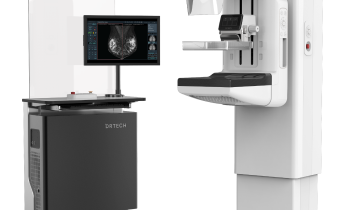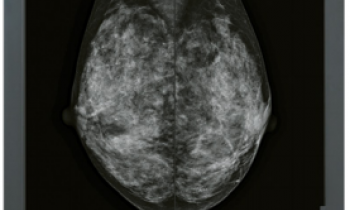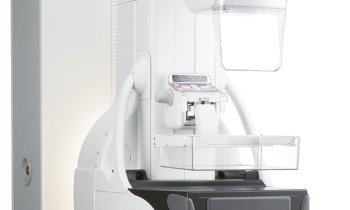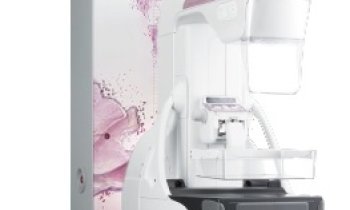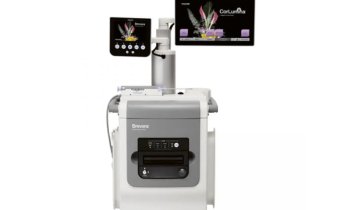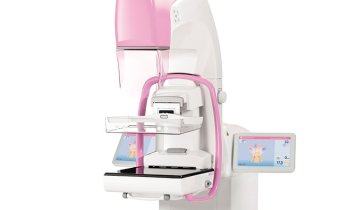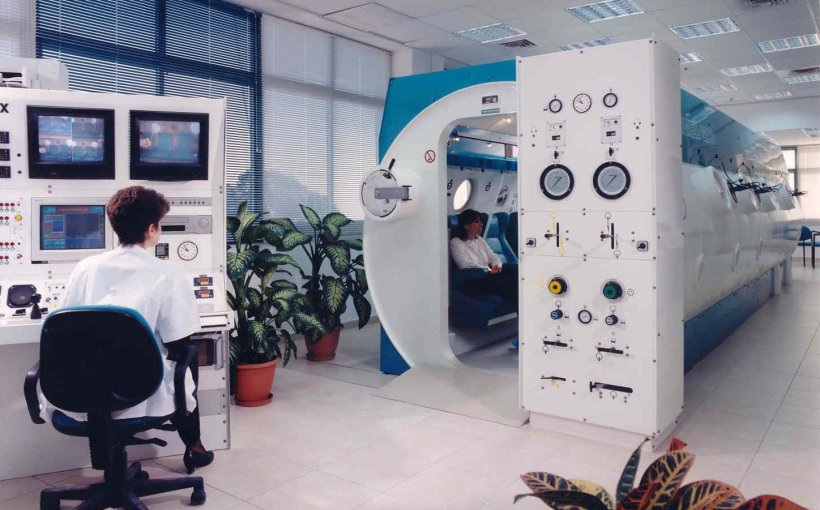
Image source: ד"ר יהודה מלמד עין הוד, HyperBarCare, CC BY-SA 3.0
Article • HBOT to reduce toxic effects
Hyperbaric oxygen therapy shows promise after breast cancer radiotherapy
Hyperbaric oxygen therapy (HBOT) treatments could offer relief to breast cancer patients who experience late toxicities following radiotherapy treatment. To date, the handful of completed clinical trials only produced inconclusive or contradictory results. Therefore, results from the latest trial, named HONEY (Effect of Hyperbaric Oxygen Therapy on Breast Cancer Patients with Late Radiation Toxicity), were anxiously awaited.
Article: Cynthia E. Keen
However, the researchers’ insights, published in JAMA Oncology, also do not provide much definitive evidence of HBOT’s benefit.1,2
HBOT provides 100% oxygen for inhalation inside a pressurized treatment chamber. The therapy is used to treat a large variety of medical conditions, including toxicities caused by cancer treatments, by increasing the amount of oxygen that the blood can carry throughout the body and by delivering oxygen-rich plasma to hypoxic tissue. This can help strengthen immune responsiveness and encourage new collagen deposition and endothelial cell formation.3
The HONEY trial
A multi-institutional team in the Netherlands conducted the hospital-based randomised clinical trial to assess the effectiveness of HBOT to reduce or eliminate moderate or severe breast, chest wall, and/or shoulder pain in combination with edema, fibrosis, or movement restriction 12 months or longer following breast irradiation. Three hundred eighty-eight (19.1%) patients out of 2,029 survey responders (who had been participants in a previous breast cancer clinical trial) reported they were experiencing these late toxic effects. A total of 189 were eligible to participate in the HONEY trial.
Recommended article
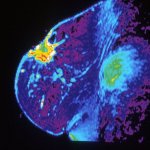
Article • Research, diagnostics, treatments
Focus on breast cancer
Breast cancer (breast carcinoma; often abbreviated as BRCA) is the most common cancer in women in many countries and the cancer with the highest mortality rate. The diagnostic and therapeutic options for breast cancer are correspondingly diverse. Keep reading for latest developments in early detection, staging, treatment and research.
The researchers invited 125 women to receive 30 to 40 HBOT sessions 120 minutes in duration over a period of six to eight consecutive weeks. Eighty-five women declined the treatment, with 70 saying that the time commitment required to participate was too great. An additional 61 were selected as the control group.
Ultimately, only 31 women completed the HBOT treatment, which consisted of breathing 100% oxygen through an oxygen mask during four intervals of 20 minutes at an atmospheric pressure of 2.5 ATA (or bar). Principal investigator Prof. Helena M Verkooijen, MD, PhD and colleagues evaluated these patients at baseline and at three- and six-months post-treatment. They report that in follow up, moderate to severe pain was not statistically different between the HBOT group (50%) and the control group (62%). However, the HBOT treatment participants experienced a significant reduction in fibrosis.
In an accompanying editorial, Dr Ezra Hahn of the Princess Margaret Cancer Centre in Toronto, Prof. Dr Aron Popovtzer of the Hadassah University Medical Center in Jerusalem, and Prof. Dr Benjamin W. Corn of the Hebrew University Faculty of Medicine in Jerusalem, write: ‘We now have modest evidence to justify the use of HBOT in treating the chronic morbidities associated with breast irradiation. […] In terms of the next steps, adequately powered randomized, sham-controlled, double-blind trials will be necessary to truly determine the benefit of HBOT.’2
Breast cancer-related HBOT clinical trials in progress
Two clinical trials are currently underway in Asia to evaluate how HBOT may reduce toxicities caused by radiotherapy to treat breast cancer.
South Korean researchers at the Cha Ilsan Medical Center, a woman’s hospital in Goyang-si near Seoul, are conducting a clinical trial to determine the efficacy and safety of HBOT to prevent radiation dermatitis. Patients receiving adjuvant radiotherapy following breast conservation surgery for localized invasive breast cancer are either randomized to receive HBOT three times a week after completing five fractional radiotherapy treatments (for 60 Gy total) or to receive standard education in dermal care. Principal investigator Assistant Professor Jee Young Lee advises that the study, which started November 2023, is measuring the incidence and severity of radiation dermatitis in each group, as well as evaluate any self-described quality of life improvements.4
Hyperbaric oxygen can improve the tissue after radiation by promoting the function of vascular endothelial cells and fibroblasts, and reducing the secretion of inflammatory factors
Kun Wang
A large randomized clinical trial of nearly 400 breast cancer patients receiving treatment at Guangdong Provincial People’s Hospital in Guangzhou, China, is evaluating if HBOT treatments can prevent radiation pneumonitis caused by chemotherapy and radiotherapy. Radiotherapy can cause radiation lung injury, leading to pulmonary fibrosis.5
‘Hyperbaric oxygen can improve the tissue after radiation by promoting the function of vascular endothelial cells and fibroblasts, and reducing the secretion of inflammatory factors, thereby inhibiting the process of fibrosis and fiber atrophy after radiotherapy, and promoting tissue repair. Therefore, it has the potential value of treating chronic radiation injury,’ explains principal investigator Prof. Kun Wang, MD, PhD.
Half of the patients are receiving standard-of-care treatment. The other half are receiving 30-40 hyperbaric oxygen therapy treatments immediately after the end of radiotherapy. Researchers will evaluate the incidence of radiation pneumonitis 12 months following completion of treatment for both patient cohorts, and the type and severity of symptoms among both groups of patients who develop radiation pneumonitis.
References:
- Van der Molen DR, Batenburg MCT, Maarse W, et al. Hyperbaric Oxygen Therapy and Late Local Toxic Effects in Patients With Irradiated Breast Cancer: A Randomized Clinical Trial. JAMA Oncol. 2024 Apr 1;10(4):464-474.
- Hahn E, Popovtzer A, Corn BW. Hyperbaric Oxygen Therapy for Management of Late Radiation Toxicity – A Honey of a Trial? JAMA Oncol. 2024 Apr 1;10(4):437-438.
- Sethuraman KN, Smolin R, Henry S. Is There a Place for Hyperbaric Oxygen Therapy? Adv Surg.2022 Sep;56(1):169-204.
- Efficacy and Safety of Hyperbaric Oxygen Therapy for Radiation Dermatitis in Patients with Localized Breast Cancer (HBOT). ClinicalTrials.gov ID NCT06158347.
- Hyperbaric Oxygen in the Prevention of Radiation Pneumonitis. ClinicalTrials.gov ID NCT05189496.
05.11.2024






